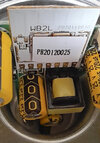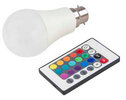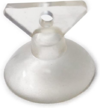So I replace an old light in an upstairs room with 3 led down lights, these lights use push connectors rather than screw terminal and have 2 sets of connectors for In and Out to allow for easy daisy chaining. I used those spring lever connectors to connect the wires from the last light in the chain to the existing rose and then shoves them all in a wago junction box.
Everything worked fine but I have started to noticed now and again when I power the lights on they will flicker for about 5 seconds and then work fine , in the last week since fitting them I've noticed this happen about 3 times so it's not every time I turn them on. But this evening I turn them on and they didn't come on at all I turn the switch off and on and again and they were came on.
Any ideas where I can start looking to fault find this issue?, would a slightly lose connection on one of the push connectors in 1 of the 3 lights cause this issue or is it a issue with the switch itself or the live switching wire maybe?.
I made sure that all the wires were pushed into the push connectors as best I could but there not easy to work on with the twin and earth cables being so ridged and the limited space in the light itself to fit the cables into.
Everything worked fine but I have started to noticed now and again when I power the lights on they will flicker for about 5 seconds and then work fine , in the last week since fitting them I've noticed this happen about 3 times so it's not every time I turn them on. But this evening I turn them on and they didn't come on at all I turn the switch off and on and again and they were came on.
Any ideas where I can start looking to fault find this issue?, would a slightly lose connection on one of the push connectors in 1 of the 3 lights cause this issue or is it a issue with the switch itself or the live switching wire maybe?.
I made sure that all the wires were pushed into the push connectors as best I could but there not easy to work on with the twin and earth cables being so ridged and the limited space in the light itself to fit the cables into.






